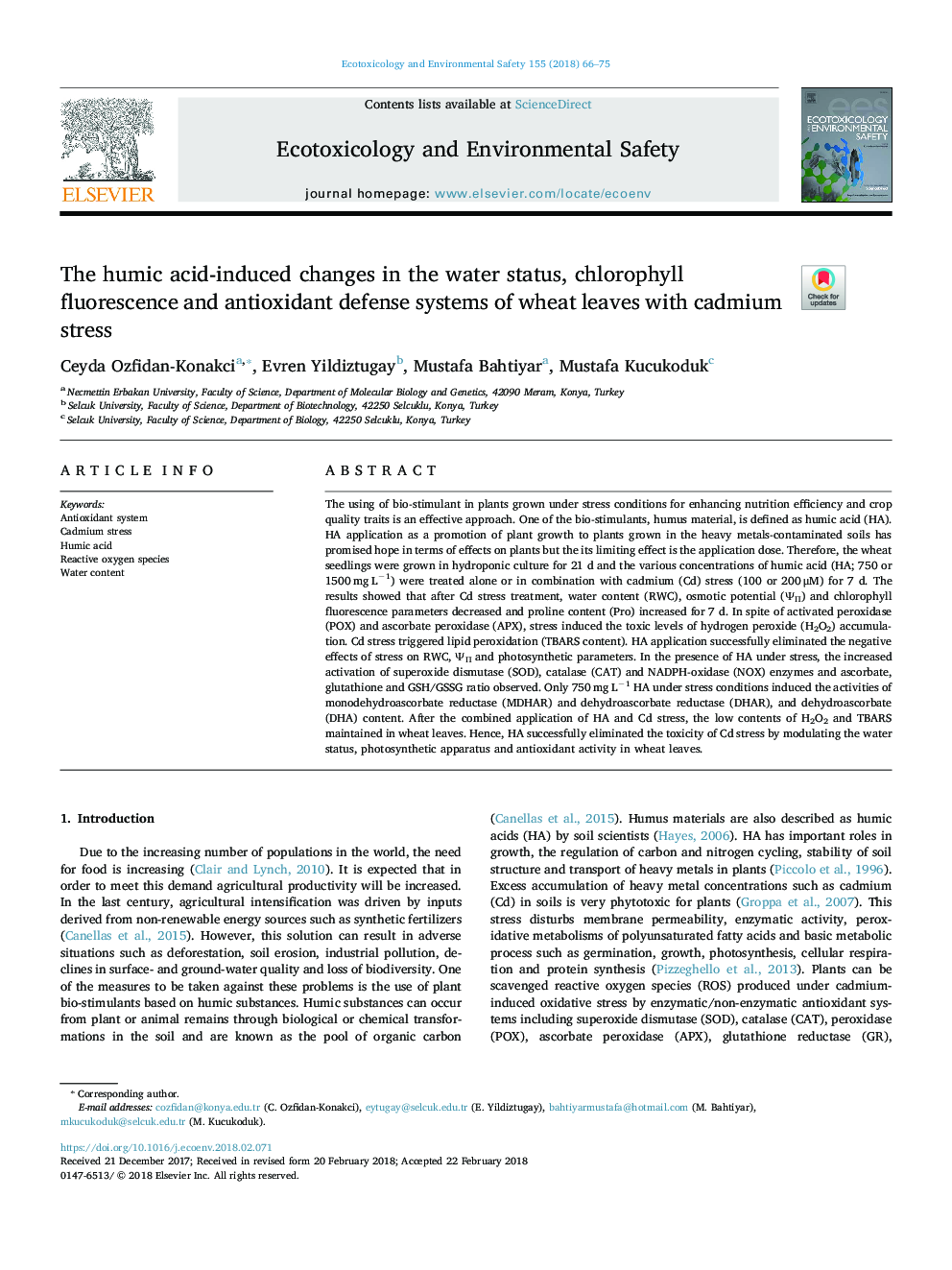| کد مقاله | کد نشریه | سال انتشار | مقاله انگلیسی | نسخه تمام متن |
|---|---|---|---|---|
| 8853992 | 1618909 | 2018 | 10 صفحه PDF | دانلود رایگان |
عنوان انگلیسی مقاله ISI
The humic acid-induced changes in the water status, chlorophyll fluorescence and antioxidant defense systems of wheat leaves with cadmium stress
ترجمه فارسی عنوان
تغییرات ناشی از اسید هیمیک در وضعیت آب، فلورسانس کلروفیل و سیستم های دفاع آنتی اکسیدانی برگ های گندم با استرس کادمیوم
دانلود مقاله + سفارش ترجمه
دانلود مقاله ISI انگلیسی
رایگان برای ایرانیان
کلمات کلیدی
سیستم آنتیاکسیدان استرس کادمیوم، اسید هومیک، گونه های اکسیژن واکنش پذیر، محتوای آب،
موضوعات مرتبط
علوم زیستی و بیوفناوری
علوم محیط زیست
شیمی زیست محیطی
چکیده انگلیسی
The using of bio-stimulant in plants grown under stress conditions for enhancing nutrition efficiency and crop quality traits is an effective approach. One of the bio-stimulants, humus material, is defined as humic acid (HA). HA application as a promotion of plant growth to plants grown in the heavy metals-contaminated soils has promised hope in terms of effects on plants but the its limiting effect is the application dose. Therefore, the wheat seedlings were grown in hydroponic culture for 21 d and the various concentrations of humic acid (HA; 750 or 1500â¯mgâ¯Lâ1) were treated alone or in combination with cadmium (Cd) stress (100 or 200â¯Î¼M) for 7 d. The results showed that after Cd stress treatment, water content (RWC), osmotic potential (ΨΠ) and chlorophyll fluorescence parameters decreased and proline content (Pro) increased for 7 d. In spite of activated peroxidase (POX) and ascorbate peroxidase (APX), stress induced the toxic levels of hydrogen peroxide (H2O2) accumulation. Cd stress triggered lipid peroxidation (TBARS content). HA application successfully eliminated the negative effects of stress on RWC, ΨΠand photosynthetic parameters. In the presence of HA under stress, the increased activation of superoxide dismutase (SOD), catalase (CAT) and NADPH-oxidase (NOX) enzymes and ascorbate, glutathione and GSH/GSSG ratio observed. Only 750â¯mgâ¯Lâ1 HA under stress conditions induced the activities of monodehydroascorbate reductase (MDHAR) and dehydroascorbate reductase (DHAR), and dehydroascorbate (DHA) content. After the combined application of HA and Cd stress, the low contents of H2O2 and TBARS maintained in wheat leaves. Hence, HA successfully eliminated the toxicity of Cd stress by modulating the water status, photosynthetic apparatus and antioxidant activity in wheat leaves.
ناشر
Database: Elsevier - ScienceDirect (ساینس دایرکت)
Journal: Ecotoxicology and Environmental Safety - Volume 155, 15 July 2018, Pages 66-75
Journal: Ecotoxicology and Environmental Safety - Volume 155, 15 July 2018, Pages 66-75
نویسندگان
Ceyda Ozfidan-Konakci, Evren Yildiztugay, Mustafa Bahtiyar, Mustafa Kucukoduk,
